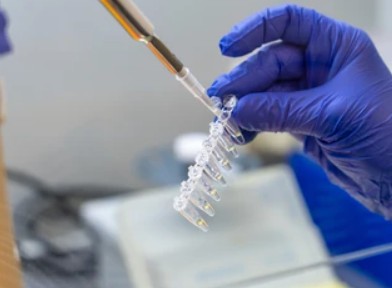
- Home
- PTMs Proteomics
- Phosphoproteomics Analysis
- Phosphopeptide Enrichment Service
Creative Proteomics is the leading custom service provider in post-translational modification (PTM) proteomic analysis. Based on advanced protein/peptide enrichment technology, we can help our global customers to perform rapid and reliable deep phosphoproteome profiling. Enrichment of specifically isolate phosphoproteins or phosphopeptides prior to high-resolution liquid chromatography-tandem mass spectrometry (LC-MS/MS) analysis is essential for successful phosphoproteomics analysis. To accelerate the success of our customers' projects related to phosphoproteomics analysis, we offer a range of commonly used separation and phosphopeptide enrichment strategies for customers to choose from, such as strong cation exchange chromatography (SCX), hydrophilic interaction chromatography (HILIC), immobilized metal affinity chromatography (IMAC), titanium dioxide (TiO2)-based phosphopeptide enrichment, and so on. Notably, our service is capable of enriching phosphorylated proteins and peptides derived from a wide range of samples, including cells, tissues, and so on.

For phosphoproteomics analysis services, there are two main challenges, namely, the need to optimize experimental methods and materials to enrich phosphorylated proteins/peptides in samples and the use of quantitative proteomics MS-based techniques. Typically, a total proteome is very complex, with a wide range of protein abundances. The abundance of phosphorylated proteins is usually much lower and the occupancy of phosphorylation sites is usually sub-stoichiometric. Therefore, chromatographic separation of the phosphoproteome, including phosphoprotein/phosphopeptide enrichment, is essential for successful phosphoproteomics analysis.
Due to the low abundance and wide dynamic range of most phosphoproteins, enrichment is usually required prior to MS-based analysis. We are dedicated to providing multiple enrichment strategies to meet customers' s specific experimental objectives. The following table lists the principles, characteristics and applications of specific phosphopeptide enrichment methods. Among them, IMAC and TiO2-based phosphopeptide enrichment are the most effective and frequently-used methods. Immunoprecipitation using specific phosphoserine- and phosphothreonine-specific antibodies is primarily applied for the capturing of tyrosine-phosphorylated proteins and peptides. In addition, we also combine different enrichment methods to obtain higher coverage of phosphoproteins or phosphopeptides, facilitating comprehensive and reliable phosphoproteomics studies.
| Term | Principles of phosphopeptide enrichment | Features | Applications |
|---|---|---|---|
| Strong cation exchange chromatography (SCX) | The negatively charged phosphate groups on phosphopeptides provide a possibility to separate phosphopeptides by the charge difference between phosphopeptides and non-phosphopeptides. | High efficiency | A commonly used mode of peptide separation. Used for pre-fractionation of phosphopeptides and in combination with other enrichment methods. |
| Metal-oxide affinity chromatography (MOAC) (TiO2-based phosphopeptide enrichment) | Based upon the affinity of a phosphate group and metal oxides. | High selectivity and sensitivity | Effective and frequently-used method for phosphopeptide enrichment |
| Immobilized metal affinity chromatography (IMAC) | Using trivalent metal ions immobilized on a stationary phase to selectively chelate negatively charged phosphate groups of phosphoproteins or phosphopeptides based on the affinity of a phosphate group and metal ions. | High selectivity and sensitivity | Effective and frequently-used method for phosphopeptide enrichment |
| Immunoprecipitation | Using specific phosphoserine- and phosphothreonine-specific antibodies for separation of phosphoserine and phosphothreonine peptides. | High specificity and efficiency | Capturing of tyrosine-phosphorylated proteins and peptides |
The comprehensive study of the phosphoproteome is heavily dependent on appropriate enrichment strategies that are mainly carried out on the peptide level. If you are interested in our services, please contact us for more details. Our clients have direct access to our staff and prompt feedback on their inquiries.
Our products and services are for research use only.